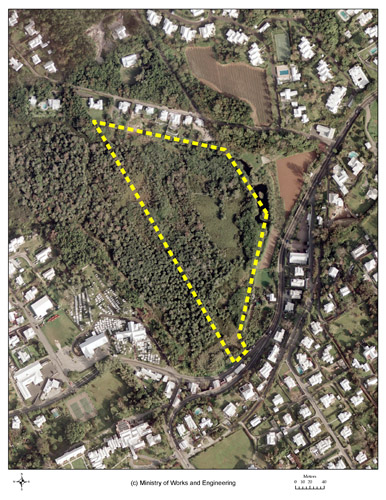Paget Marsh
Lovers Lane, Paget
Acreage: 8.58 acres
Acquired:
Purchased 1965
Special Features:
Public access, boardwalk* with interpretive signage (*boardwalk currently closed for renovation)
Paget Marsh is the least disturbed of Bermuda’s original peat marshes. Totalling over 20 acres, it is jointly owned and managed with Bermuda National Trust. Audubon owns the central portion of the marsh. A boardwalk with an interpretive trail makes this an easily accessible reserve for visitors and it is a good place to see waterfowl and woodland birds.
Paget Marsh’s most unique feature is approximately 14 acres of endemic Bermuda Cedar/Palmetto ‘hammock’ forest, which once covered pre-colonial Bermuda. This is the last place where a large sample of the original primeval forest cover of the island remains intact. In the shade of this forest survive a variety of native and endemic sedges, shrubs and ferns, which are dependent on the particular conditions found in this habitat, including the rare endemic Bermuda Sedge (Carex bermudiana) and St. Andrew’s Cross (Ascyrum hypericoides).
The marsh is particularly important and interesting in that it contains a diverse variety of wetland habitats, ranging from open water ditches and saw-grass savannah, to hammock forest, wax-myrtle thickets and stands of Red Mangrove (Rhizophora mangle). It is home to many local woodland birds such as Northern Cardinals, Gray Catbirds and White-eyed Vireos and a variety of migrant warbler species. Barn Owls have been known to roost in the Palmettos and hunt along the ditches.
Man’s impact on Paget Marsh has mainly come through the digging of drainage ditches around the periphery of the marsh in the 1940s and the introduction of aggressive acid soil plant species including Guava (Psidium guajava) and Ardisea (Ardisia polycephala). Management of the marsh has included culling these species followed by reforestation with Bermuda Cedars and other native plants in the resulting clearings.


